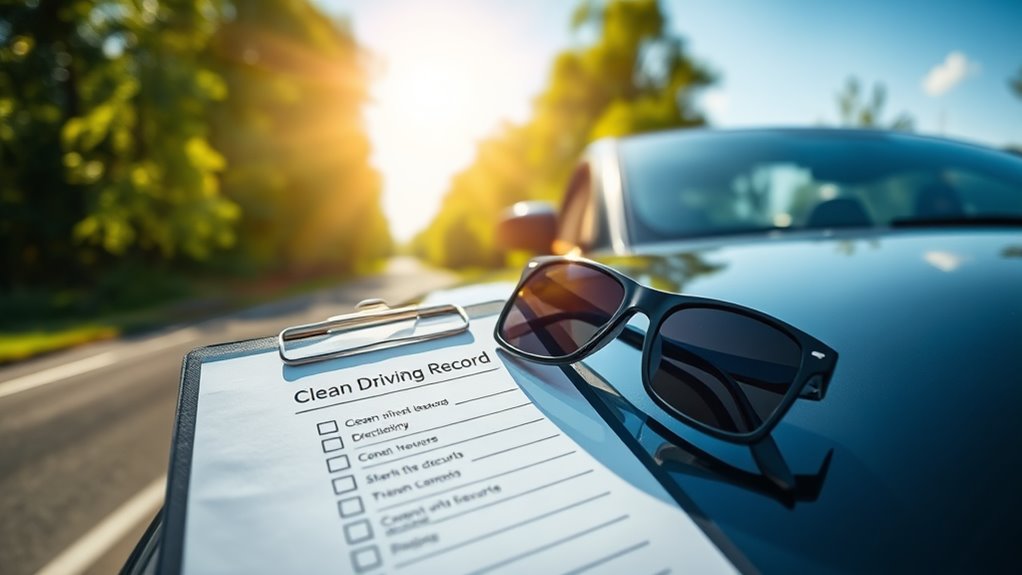Did you know that nearly 1 in 5 drivers in Ohio may find themselves classified as high-risk due to various infractions? If you're one of them, maneuvering through the world of SR22 insurance can be intimidating. With the right choices, however, you can secure coverage that meets your needs without breaking the bank. Let's explore the top five insurance options available, so you can make an informed decision that suits your circumstances.
Key Takeaways
- American Family offers competitive SR22 rates starting at $26 monthly, making it a strong option for high-risk drivers.
- Erie Insurance provides reasonable premiums around $1,561 annually, appealing to those seeking affordable coverage.
- State Farm is known for excellent customer service and can tailor policies for high-risk individuals, ensuring support during the SR22 process.
- Geico features discounts for safe driving practices, which can help reduce costs for high-risk drivers over time.
- Progressive specializes in high-risk policies and offers competitive rates, making it a viable choice for those needing SR22 coverage.
Understanding SR22 Insurance in Ohio

Understanding SR-22 insurance in Ohio is essential for drivers facing high-risk situations.
Understanding SR-22 insurance is vital for high-risk Ohio drivers to maintain their driving privileges.
It's crucial to understand that SR-22 isn't an insurance policy; it's a certificate proving you meet Ohio's minimum liability insurance requirements. This typically includes $25,000 for bodily injury per person, $50,000 for total bodily injury per accident, and $25,000 for property damage. If you've had serious infractions like a DUI or multiple traffic violations, you'll likely need this certificate for at least three years to avoid license suspension. Moreover, if you do not have regular vehicle access, you can still obtain non-owner SR-22 insurance to ensure compliance. Many drivers are unaware that SR-22 filings are reported directly to the Ohio Bureau of Motor Vehicles by your insurance provider.
While the filing fee is low, your premiums will increase due to your higher risk status. Knowing these basics can help you navigate the process more effectively and maintain your driving privileges in Ohio.
Steps to Obtain SR22 Insurance
To successfully obtain SR22 insurance in Ohio, you need to follow a few essential steps that confirm compliance with state requirements.
First, determine if you need SR22 due to issues like OVI convictions or multiple violations.
Next, choose an insurer licensed in Ohio that can handle SR22 filings. Verify your policy meets the minimum coverage requirements of $25,000/$50,000 for bodily injury and $25,000 for property damage.
Your insurer will electronically file the SR22 form with the BMV, typically within 72 hours, facilitating license reinstatement.
Maintain continuous coverage to avoid penalties and notify your insurer of any changes.
Finally, monitor your SR22 status to verify it remains active for the mandated three to five years.
Costs Associated With SR22 Insurance
While maneuvering through the costs associated with SR22 insurance in Ohio, it's important to grasp the various factors that can influence your premiums.
On average, expect to pay around $55 monthly for minimum coverage and $123 for full coverage. Your specific violation type plays a significant role; DUIs can push annual costs up to $2,514 or more.
Provider differences also matter—American Family offers the most affordable SR22 at $26 monthly. Don't forget additional filing fees ranging from $15 to $25.
Maintaining a clean driving record and comparing quotes can help you find more budget-friendly options.
Ultimately, understanding these costs will empower you to navigate your SR22 insurance effectively, minimizing financial strain during this challenging period.
Choosing the Right Insurance Provider

Finding the right insurance provider can greatly impact your experience as a high-risk driver in Ohio. Start by comparing quotes from top insurers like American Family, known for its affordable rates averaging $678 annually.
Erie Insurance follows closely with competitive premiums around $1,561. It's crucial to evaluate each provider's specialization in high-risk policies, as some may offer better options for your specific situation.
Don't overlook discounts; companies like American Family and Erie provide various savings opportunities. Additionally, assess customer service quality, as a supportive insurer can ease your concerns.
Maintaining Your SR22 Status
Maintaining your SR22 status is vital for maneuvering the complexities of being a high-risk driver in Ohio. To avoid license suspension, you must guarantee continuous SR22 coverage, which typically lasts 3 to 5 years depending on your infractions.
Timely insurance payments are important; lapses trigger immediate notifications to the BMV, complicating your reinstatement process. If you decide to switch providers, coordinate carefully to prevent any coverage gaps.
Conclusion
To sum up, finding fantastic SR22 insurance for high-risk drivers in Ohio isn't just a task—it's a triumph. By comparing competitive coverage from companies like American Family, Erie, Geico, Progressive, and State Farm, you can secure satisfactory savings and solid support. Stay savvy about your options, stick to your SR22 status, and seek the best fit for your financial future. With the right approach, you can navigate this complex landscape confidently and creatively!





















